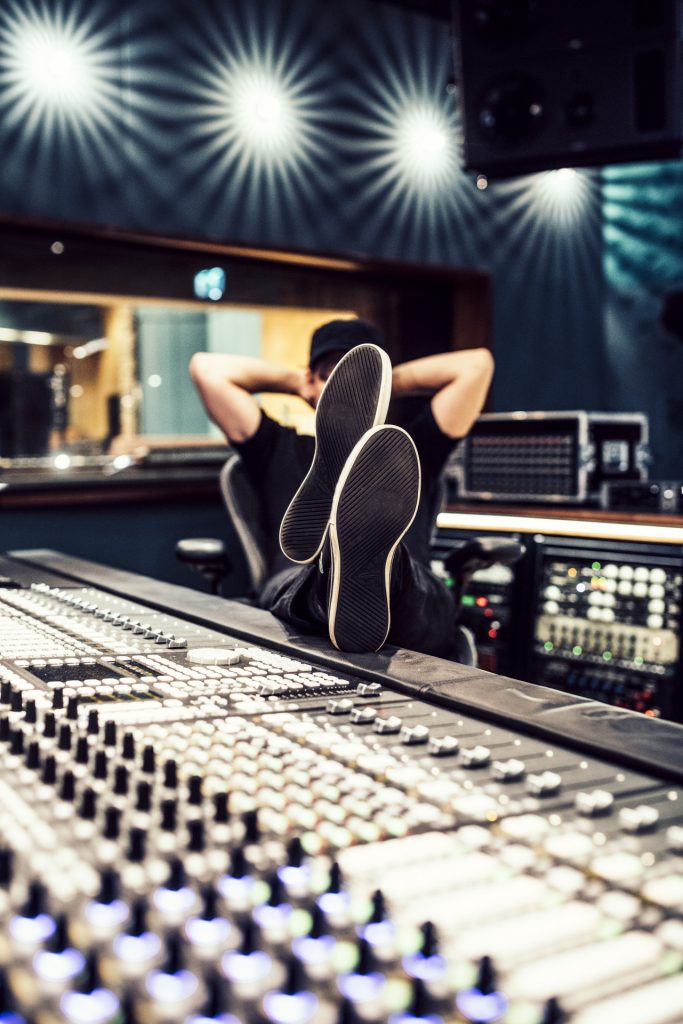Music Production Mastering

Where mixing is about balancing individual parts, tightening rhythmic elements and emphasizing important sections in a track, a mastering engineer looks at the big picture. He or she listens to the stereo mixdown and thinks about what else is needed to improve the sound. He corrects levels and balance and ensures that the track sounds good and consistent on every medium and on every format.
In an ideal world, a mastering engineer is a trained engineer in a specially equipped studio. Nowadays many producers prefer do it themselves. And although it is always the better option to have a second pair of ears doing the mastering, it is equally important to at least know how it works.
Start listening to the track from beginning to end at a normal volume. Then listen to it a second time and take notes. Does the mix sound too shrill, does it have too many low frequencies, could the vocals come out a little more? Make a decision about what the master’s sound should be.
Use a reference track to keep your ears fresh. During the process, take a five to ten minute break at least every 40 minutes.
Typical mastering tools are:
� Compressors, limiters and expanders: to adjust the dynamics of the mix;
� Equalizers: to shape the sound of the mix;
� Stereo imaging: to clean up the stereo image of the low frequencies, or to make the stereo image a bit wider;
� Exciters, saturation: to give color to a mix. Exciters add even or odd harmonics to a mix and can give life.
� Limiters, maximizers: to prevent the mix from clipping;
� Metering: While it’s essential to use your ears, you use meters a lot to get visual feedback on the stereo image, frequencies and dynamic range.
� Dithering: Used to convert high-resolution files (32 or 24 bit) to lower bit depths (for example 16 bit or mp3) while preserving dynamic range and minimizing distortion.
No mastering chain looks the same, but it could look like this:
Corrective EQ: Correct frequencies where necessary, but try to keep the cuts small. If you find that you need to cut more than 3 dB somewhere, you are altering the essence of the mix.
Compression: The next step is to control the dynamics of the track. Start with a ratio of anywhere between 1.2:1 to 2:1, the slowest attack and fastest release setting and aim for around 1-2 dB gain reduction. Adjust the attack and release to the character and tempo of the song. Compensate for the gain reduction with the make up gain.
Additive EQ: boost frequencies that benefit the mix. Use a filter with a wide Q and boost max 3 dB. Do the lead vocals need to come out of the mix a little more? You may only need to boost around 3 kHz in the middle. Should the pads have a little more air? Boost 20 kHz on the sides.
Colour: the following applies: don’t do it if the mix doesn’t need it. One option to color the mix is saturation. This ranges from a tape emulation to an exciter. Harmonics are added that make the mix sound fuller and lively. But keep the gestures small. You can quickly destroy the dynamics of the mix.
Stereo correction: correct the stereo image if necessary. Preferably use a multiband stereo imager such as Ozone, so that you will only adjust there where necessary.
Limiting: set the output level to -1 dB and boost the input gain until you get 1-3 dB gain reduction. As with the compressor, you set the attack and release time to match the tempo and feel of the track.
Your master should now be loud enough and consistent in dynamics and frequency range. Remember that mastering is all about subtle gestures. You are building on the artistic choices of a producer or mixing engineer.
Most importantly, listen and act with intent. If your order is different than described above, that’s okay! Then you have made a choice that was necessary for your track!
To read more about Music Production and how to improve the process of developing, creating and refining recorded music visit our knowledge base page Music Production Education.
